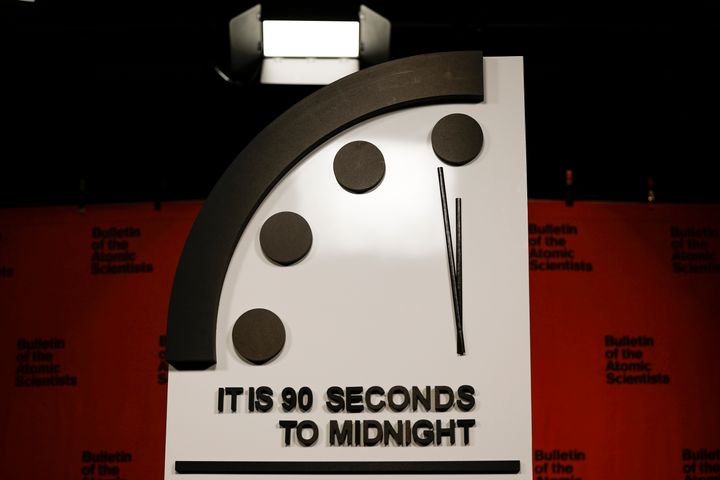
Experts just unveiled the Doomsday Clock for 2024 based on the threats faced around the world this year, and they’ve decided not to move it closer to midnight.
That means it is still at 90 seconds to midnight, as it was last year – which is the closest it has ever been to 12 o’clock since the clock was devised in 1947.
The symbolic clock is meant to show how close we are to a human-made global catastrophe, and midnight represents complete calamity.
The Science and security board of the Bulletin of the Atomic Scientists, a non-profit organisation in Chicago, decides where the hands are on the clock every January.
The non-profit, actually set up by J.Robert Oppenheimer and Albert Einstein, aims to warn and educate the public about the consequences of atomic power.
The clock used to be just the front of the Bulletin’s publication, but now it is a popular motif about the perils that come with the world’s technology.
The UN’s secretary-general Antonio Guterres has even described the Doomsday Clock as a “global alarm clock”.
Discussing this year’s decision, the Bulletin’s president and CEO, Rachel Bronson, said: “Make no mistake: resetting the Clock at 90 seconds to midnight is not an indication that the world is stable. Quite the opposite. It’s urgent for governments and communities around the world to act.”
The scientists cited “ominous trends”, like the war in Ukraine, the growing reliance on nuclear weapons, the hottest year on record (2023), climate-related disasters, the Israel-Hamas war and the development of AI among other threats for keeping the clock at 90 seconds to midnight.
It was moved to 90 seconds to midnight last year to reflect how humanity had entered a “time of unprecedented danger” amid the Ukraine war and climate crisis.
We were at 100 seconds to midnight in 2020 because of the combined risks of nuclear war and climate change.
If the clock ever goes further away from midnight, it means we’ve reduced the risk of global crisis.
But, the furthest from midnight we’ve ever been was in 1991, when the Cold War ended and the experts changed the time to 17 minutes to midnight.
And ever since 2007 – when North Korea held a nuclear test, and it was moved to five minutes to midnight – the time on the clock has not moved backwards.
When Donald Trump entered the White House in 2017, the specialists moved it to two and a half minutes to midnight.
In fact, even when the clock was first unveiled, it put humanity at seven minutes to midnight.
